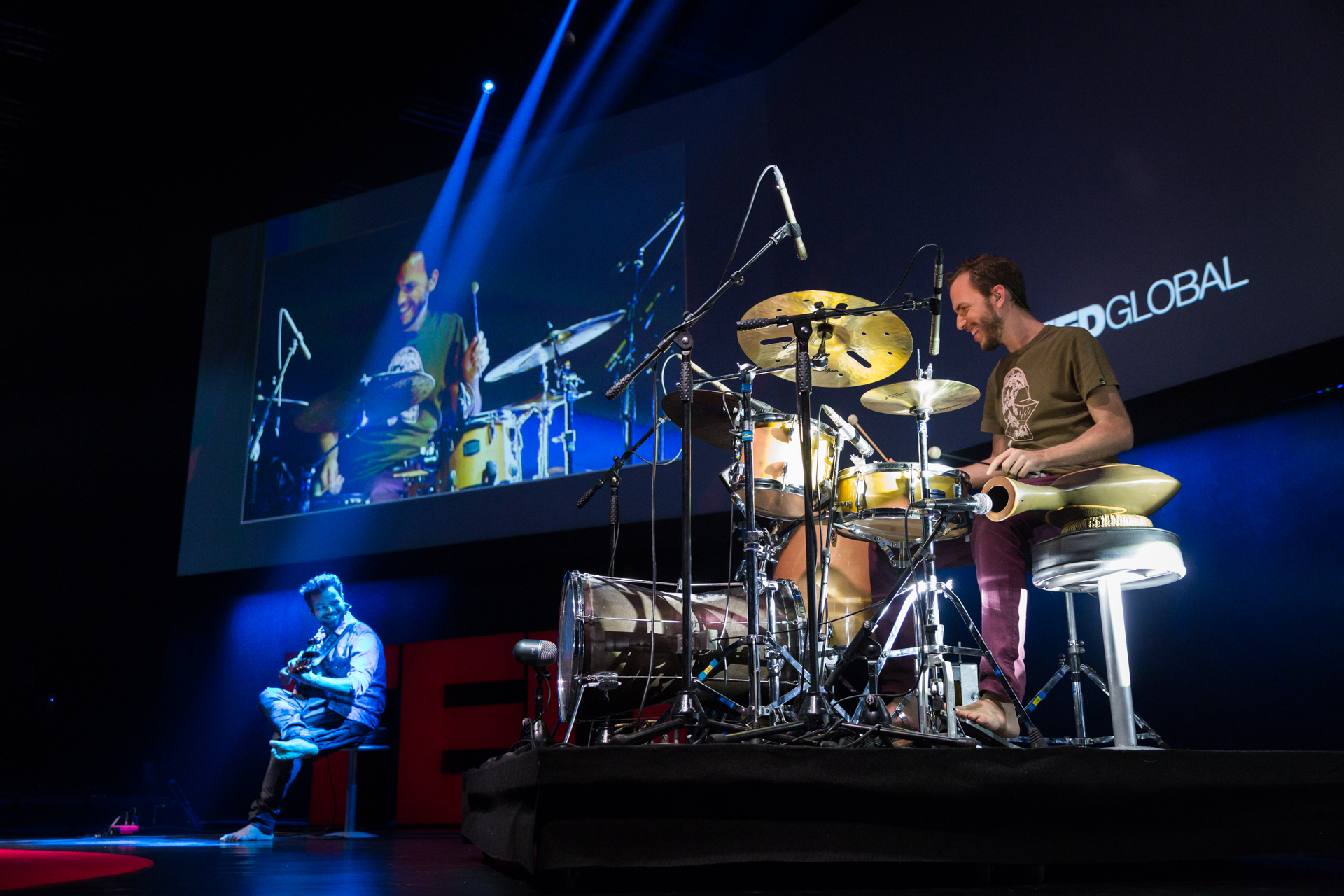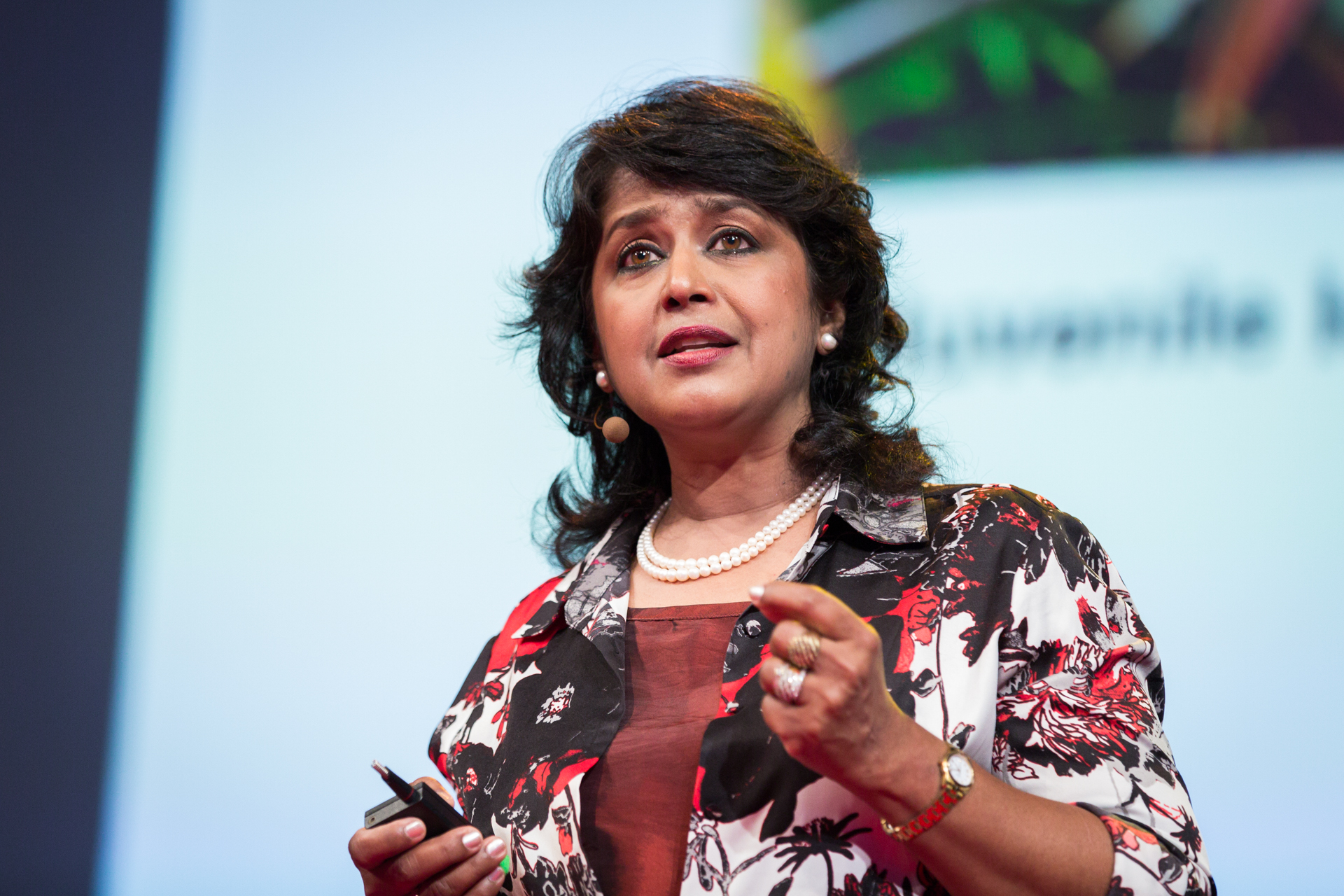The theme of Session 4 is Field Work — and we’re hearing from people who get outside, who work in the field and hear what’s really going on.
Ameenah Gurib-Fakim is a professor at the University of Mauritius, and she’s here this morning to show us five plants unique to where she works and lives: the Mascarene Islands. She introduces us to benjoin (terminalia bentzoe), a plant with leaves of many different shapes that evolved to escape the jaws of grazing tortoises, who have poor eyesight and avoid leaves they don’t recognize. This amazing plant could hold the answer to antibiotic resistance, she says. Next, Gurib-Fakim points us to the baobab tree (adansonia digitata), sometimes called the “tree of life.” This tree could be the answer to food security, because its fruit — the “monkey apple” — contains more protein than human milk. “Biodiversity underpins all life on earth, and yet we don’t realize how valuable and precious this resource is,” says Gurib-Fakim. “When a plant or animal goes extinct, disappears from the face of earth, we have lost an entire subset of the earth’s biology, along with the medicinal or other properties it possesses.” As she says, “Every time a forest comes down … it’s a potential lab going down with it.”
“If we want international peacekeeping to work, conflicts must be resolved from the bottom up,” says peace and conflict researcher Séverine Autesserre. As an international humanitarian worker in the Democratic Republic of Congo, Autesserre has observed 18 years of intense violence in the region. Almost 4 million people have died in the conflict, making it the deadliest since World War II. After 2 decades of bloodshed, she says, it’s clearly time to change our approach. The conflict in Congo is fundamentally local, she says: tensions revolve around political, social and economic disagreements in one village or territory that escalate into regional, national, cross-border fighting. “Community leaders know what to do to reduce conflict in their own community,” she says. What can international actors do? Expand funding and support for local resolutions of land conflict and community reconciliation.
We’re looking at the wrong maps, says grassroots peace worker Doreen Khouri. Mass media is showing us Syria as a map of ISIS and its strongholds – but this “reduces what’s going on in Syria to violence, conflict and geopolitics,” she says. By focusing too much on ISIS and violence, we’re missing peaceful grassroots efforts forming on the ground in the country around education, basic needs like water, creativity and art. Using examples of self-organized governance in Aleppo and Raqqa, Khouri calls for us to listen up and pay attention to the non-militarized story in Syria. She urges: Seek out alternative news sources coming from the region (she suggests looking at Syria Untold). Because when the people are “invisible, we no longer see them as part of the solution or as the prime stakeholders in peace.”
Oren Yakobovich was born in Israel and dreamed of serving in the Israeli army. But during his service in the West Bank, he was surprised to see peaceful Palestinian protests — and to see those protesters being mistreated by his fellow soldiers. He refused to serve, and landed himself in jail. He realized he needed a way for people around the world to see what he saw. “Today, with all the technology we have … more than three billion people consume news censored by those in power,” he says. His solution: Videre, which exposes human rights abuses in all their harsh reality, using hidden cameras worn by locals who can record what’s really happening on the ground, in locations where balanced reporting is absent. “I used to carry a big gun, now I’m carrying this,” he says, holding a tiny hidden camera between two fingers. “We need to use this power wisely.” (Read more about this talk.)
In an intricate web of rhythms and beats, two young virtuosos from distant ends of the world come together to make Circle of Sound. This “Indo-rock opera” features Soumik Datta, who plays the 19-stringed sarod, and Bernhard Schimpelsberger, who has mastered the tricky art of playing Indian rhythms onto a custom Western-style drum kid. You’ve never heard rhythmic fusion quite like this.
And finally, this year’s TED Prize winner, Charmian Gooch, takes the stage to update us on her wish to launch a new era of openness in business and spread awareness of how anonymous companies pave the way for corruption. On the stage, she reveals the Great Ripoff Map, “a new project to map out the abuse of anonymous company ownership around the world.” She says, “It’s early days, but it already reveals a pretty shocking picture.” (Read more about this talk.)

Circle of Sound performs at TEDGlobal 2014. Photo: James Duncan Davidson/TED

Comments (1)